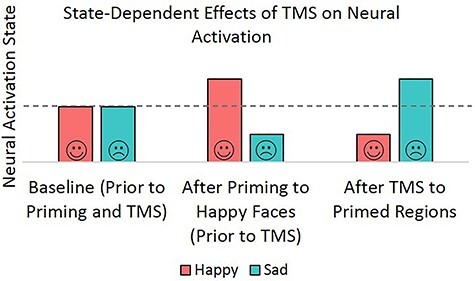Fig. 2 .

Theoretical approach to exploiting state-dependent effects of NIBS in social processing research. Left to right: neural activation of representations of different facial emotions is initially at a baseline level. Activation of neurons coding for a particular facial emotion is then manipulated through use of priming. Following subsequent TMS, activity of the primed neurons (i.e. those coding for happy faces) may be inhibited compared to baseline, whereas activity of unprimed neurons (coding for sad faces) may be facilitated. This theoretical pattern of results is in line with empirical evidence in the visual perception domain whereby TMS facilitates activity of less active neural populations (Silvanto et al., 2008).
